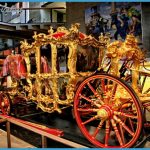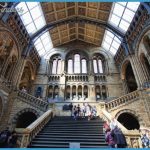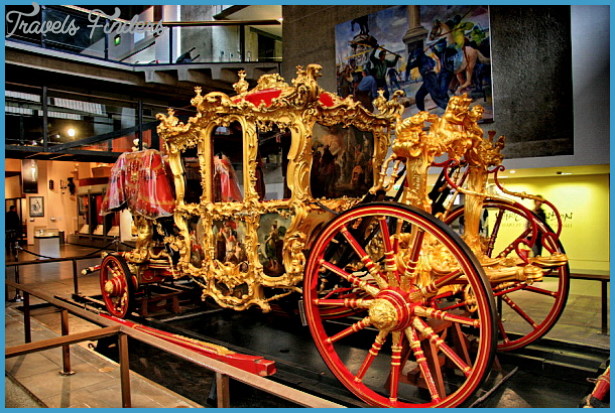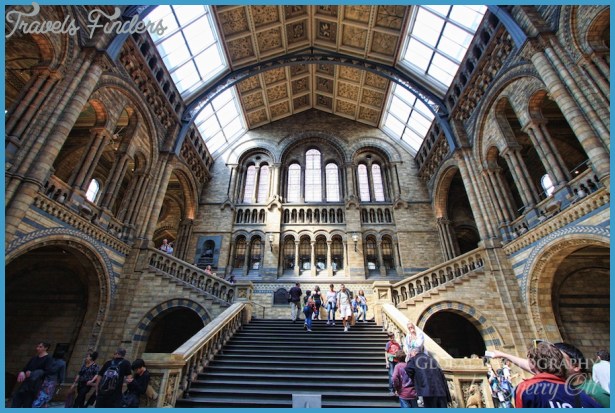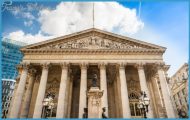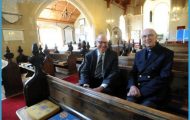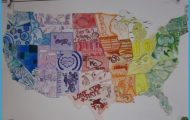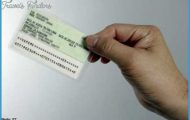MUSEUMS of LONDON
Centuries spent as the capital of an empire, together with a decidedly English penchant for collecting, have given London a spectacular set of museums. Art lovers, history buffs, and amateur ethnologists won’t know which way to ton when they arrive. And there’s even better news for museum lovers: In celebration of the Queen’s Golden Jubilee, all major museums are free indefinitely.
BRITISH MUSEUM
The funny thing about the British Museum is that there’s almost nothing British in it. The Western Galleries house the most famous items in the collection. Room 4 harbors Egyptian sculpture, including the Rosetta Stone, and Room 18 is entirely devoted to the Athenian Elgin Marbles. Other highlights include giant Assyrian and Babylonian reliefs, the Roman Portland Vase, and bits and bobs from two Wonders of the Ancient World, the Temple of Artemis at Ephesus and the Mausoleum of Halikarnassos. The Northern Galleries feature eight rooms of mummies and sarcophagi and nine of artifacts from the ancient Near East, including the Oxus Treasure from Iran. The northern wing also houses the excellent African and Islamic galleries, the giant Asian collections, and the Americas collection. The upper level of the South and East Galleries is dedicated to ancient and medieval Europe, some of which is actually British. Famous remains include the preserved body of Lindow Man, an Iron Age Celt (Room 50), along with treasures excavated from the Sutton Hoo Burial Ship (Room 41). Room 42 is home to the enigmatic Lewis Chessmen, an 800-year-old chess set mysteriously abandoned in Scotland. (Great Russell St. Bloomsbury. Rear entrance on Montague St. 7323 8000; www.thebritishmu-seum.ac.uk. Tube: Tottenham Court Rd. Russell Sq. or Holborn. Great Court open M-W and Su 10am-5:30pm, Th-Sa 9am-9pm. Galleries open daily 10am-5:30pm. Suggested donation £2. Temporary exhibitions average £7, students £3.50. Audio tours £2.50. l’Ahr. highlights tour M-Sa 10:30am and lpm, Su 11am, 12:30,1:30, 2:30, and 4pm. £7, students £4.)
NATIONAL GALLERY
The National Gallery was founded by an Act of Parliament in 1824, with 38 paintings displayed in a townhouse; it grew so rapidly in size and popularity that a new gallery was constructed in 1838. The new Sainsbury Wing houses the oldest, most fragile paintings, including the 14th-century English Wilton Diptych, Botticelli’s Venus and Mars, and the Leonardo Cartoon, a detailed preparatory drawing by Leonardo da Vinci for a never-executed painting. The West Wing displays paintings from 1510-1600 and is dominated by Italian High Renaissance and early Flemish art. Rome and Florence fight it out in Room 8, with versions of the Madonna and Child by Raphael and Michelangelo. The North Wing spans the 17th century, with an exceptional array of Flemish work. Room 23 boasts no fewer than 17 Rembrandts;
the famous Self Portrait at 63 gazes knowingly at his Self Portrait at 34. The East Wing, home to paintings from 1700-1900, is the most popular in the gallery, thanks to an array of Impressionist works including van Gogh’s Sunflowers and Cezanne’s Bathers in Room 45, and two of Monet’s Waterlilies in Room 43. Room 34 serves as a reminder that there was art on the British side of the Channel, with six luminescent Turners. (Main entrance on north side of Trafalgar Sq. Westminster. 7747 2885; www.nationaigailery.org.uk. Tube: Charing Cross or Leicester Sq. Open M-Tu and Th-Sa 10am-6pm; W 10am-9pm, Sains bury Wing special exhibitions until 10pm. Free; some temporary exhibitions £5-7, students £2-3. Audio tours free; suggested donation £4. lhr. gallery tours start at Sainsbury Wing info desk daily 11:30am and 2:30pm, W also 6:30pm. Free.)
TATE MODERN
Since opening in May 2000, Tate Modem has been credited with single-handedly reversing the long-term decline in museum attendance in Britain. The largest modem art museum in the world, its most striking aspect is the building, formerly the Bankside power station. A conversion by Swiss firm Herzog and de Meuron added a seventh floor with wraparound views of north and south London, and turned the old Turbine Hall into an immense atrium that often overpowers the installations commissioned for it. The Tate has been criticized for its controversial curatorial method, which groups works according to themes rather than period or artist: The four divisions are LandscapeMatterEnvironment and Still LifeObjectReal Life on level 3 and NudeBodyAction and HistoryMemorySociety on level 5. Even skeptics admit that this arrangement throws up some interesting contrasts, such as the nascent geometry of Cezanne’s Still Life with Water Jug overlooking the checkerboard tiles of Carl Andre’s Steel Zinc Plain, and the juxtaposition of Monet’s Waterlilies with Richard Long’s energetic Waterfall Line. The main achievement of the thematic display is that it forces visitors into contact with an exceptionally wide range of art. It’s now impossible to see the Tate’s more famous pieces, which include Marcel Duchamp’s Large Glass and Picasso’s Weeping Woman, without also confronting challenging and invigorating works by little-known contemporary artists. (Bankside, The South Bank. Main entrance on Holland St. s7887 8006; www.tate.org.uk. Tube: Blackfriars. Open M-Th and Su 10am-6pm, FSa lOam-lOpm. Free. Special exhibitions £5-7; students £4-6. Audio tours £1. Free tours meet on the gallery concourses: LandscapeMatterEnvironment 3pm, level 3; Still LifeObjectReal Life 2pm, level 3; Nude BodyAction 11am, level 5; HistoryMemorySociety noon, level 5.)
TATE BRITAIN
The original Tate opened in 1897 as a showcase for modem British art. Before long, it had expanded to include contemporary art from all over the world, as well as British art from the Middle Ages on. Despite many expansions, it was clear that the dual role was too much for one building; the problem was resolved with the relocation of almost all the contemporary art to the new Tate Modem at Bankside (see above). At the same time, the original Tate was rechristened and rededicated to British art. The Clore Gallery continues to display the Turner Bequest of 282 oils and 19,000 watercol-ors; other painters featured heavily are William Blake, John Constable, Lucien Freud, David Hockney, and Dante Gabriel Rossetti. Despite the Tate Modem’s popular explosion, the annual Turner Prize for contemporary art is still held here. (M ill bank, near Vauxhall Bridge, Westminster. 7887 8008; www.tate.org.uk. Tube: Pimlico. Open daily 10am-5pm. Free. Special exhibitions £3-9. Audio tours £3. Highlights tour M-F 11:30am, Sa 3pm. Free.)
VICTORIA & ALBERT MUSEUM
Founded in 1852 to encourage excellence in art and design, the V&A is the largest museum of the decorative arts in the world as befits an institution dedicated to displaying the fine and applied arts of all countries, all styles, all periods. The subject of a £31 million renovation, the vast British Galleries hold a series of recreated rooms from every period between 1500 and 1900, mirrored by the vast Dress Collection, a dazzling array of the finest haute couture through the ages. The ground-floor European collections range from 4th-century tapestries to Alfonse Mucha posters; if you only see one thing in the museum, make it the Raphael Gallery, hung with paintings commissioned by Leo X in 1515. The Sculpture Gallery, home to Canova’s Three Graces (1814-17), is not to be confused with the Cast Courts, a plaster-cast collection of the world’s sculptural greatest hits, from Trajan’s Column to Michelangelo’s David. The V&A’s Asian collections are particularly formidable if the choice of objects occasionally seems to rely on national cliches (Indian carvings, Persian carpets, Chinese porcelain, Japanese ceramics), it says more about how the V&A has formed opinion than followed it. In contrast to the geographically themed ground floor, the upper levels are mostly arranged in specialist galleries devoted to everything from jewelry to musical instruments to stained glass. An exception to the materially themed arrangements is the large 20th-century collections, featuring design classics from Salvador Dali’s 1936 Mae West” sofa lips to a pair of 1990s rubber hot pants. The six-level Henry Cole wing is home to a collection of British paintings, including some 350 works by Constable and numerous Turners. Also on display are a number of Rodin bronzes, donated by the artist in 1914, and a collection of miniature portraits, including Holbein’s Anne of Cleves. The Frank Lloyd Wright gallery contains a full-size recreation of the office commissioned by Edgar J. Kauffmann for his Pittsburgh department store in 1935. (Main entrance on Cromwell Rd. Kensington, s 7942 2000; www.vam.ac.uk. Tube: South Kensington. Open M-Tu and Th-Su 10am-5:45pm, W and last F of month lOam-lOpm. Free. Tours daily 10:30, 11:30am, 1:30, and 2:30pm. Gallery talks daily lpm. Free. Talks, tours, and live music W from 6:30pm; last F of month also fashion shows, debates, and DJs.)

